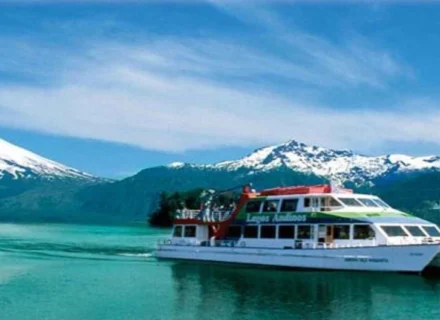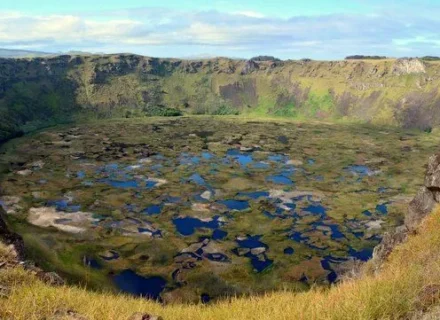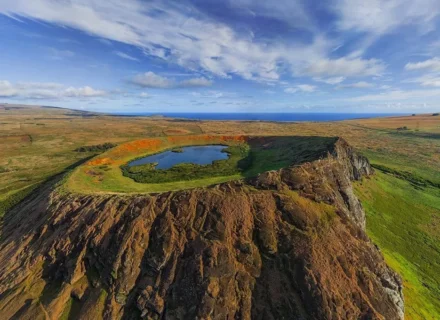A region famed for its national parks brimming with untamed wilderness and harbouring exotic creatures that cannot be found elsewhere. But Central America has so much more to it than this. Flanked by white sand shores and sapphire seas, with crumbling remnants of ancient civilisations dotted through the jungles of the north, the region has countless opportunities for anyone keen to explore its hidden depths. Here is our summary of the essential information to help those looking to travel through this relatively untouched cluster of nations.
What are the main languages spoken in Central America?
The vast majority of residents in Central America speak fluent Spanish, with some still speaking native languages that derive from the tongues spoken by the Mayan civilisations of old. The only exception to this is Belize, where English is the primary language due to its former status as a member of the British Empire, an occupation that originated from British pirate settlements in the 17th century.
Currencies
It is always a good idea to carry a few US dollars with you when travelling between different countries in Central America as they tend to be easier to exchange than other foreign currencies, so provide a good backup in an emergency (other than Cuba, where US dollars are not accepted as legal tender).
Belize – Belize dollar
Costa Rica – Costa Rican Colon
Cuba – Cuban Peso
Guatemala – Guatemalan Quetzal
Honduras – Honduran Lempira
Mexico – Mexican peso
Panama – Panamanian balboa
What’s the deal with visas?
Belize, Costa Rica, Guatemala and Honduras – Many tourists, including those who carry a UK passport, do not need a visa to enter these countries but are only allowed in the country for a maximum of 90 days, with fees incurred for staying after these 90 days have passed.
Cuba – Entering Cuba requires a tourist visa for the majority of people looking to travel there, including UK nationals, as well as proof of a flight out of Cuba.
Mexico – Over 60 different nationalities don’t require a visa to enter Mexico and can stay for a maximum stay of 180 days. Some nationalities that require a visa are eligible to apply for an electronic visa.
Panama – Most nationalities don’t require a visa to enter Panama and can stay for a maximum stay of 180 days.
Vaccinations
It is always advisable to check which vaccinations your GP recommends or alternatively visit a travel clinic two months prior to leaving. The following vaccinations are recommended prior to travelling to Central America:
 Yellow Fever
Yellow Fever Hepatitis A and B
Hepatitis A and B Typhoid
Typhoid TDaP – Tetanus, Diphtheria and Pertussis vaccine
TDaP – Tetanus, Diphtheria and Pertussis vaccine Cholera
Cholera Diphtheria
Diphtheria Diphtheria
Diphtheria
Malaria risks vary according to location and season, so it is a good idea to seek the advice of your GP before travelling.
Emergency Calls
It is always good practice to have important phone numbers stored on your phone in case of emergency.
- Belize Emergency services – 911
- Costa Rica Emergency services – 911
- Cuba Police – 106 – Fire – 105
- Guatemala Police – 120/122/123
- Honduras Police – 199 Ambulance – 195
- Mexico Emergency services – 911
- Panama Emergency services – 911
Bartering
Not just a local way of life, bartering for a vendor’s wears can also be a lot of fun and extremely satisfying if done correctly. It is important to note that bartering is not customary throughout Central America, so don’t head into a local market assuming that you can haggle the asking prices down. You will come across as rude and may even offend someone. Listen to what others are discussing around you, as this will also give a good indication of the sort of price/discount you should be aiming for.
Speaking the local language, whilst not vital, can be very helpful. Not only does it avoid things getting lost in translation, but it also makes you seem more immersed in the culture and aware of how the system works, meaning people are less likely to try and fleece you. Buying items in bulk helps keep the individual prices down, so if buying multiple gifts it is probably wise to get them from the same stall if possible.
Another good tip is to carry smaller bills with you. It is not uncommon for stalls to have a lack of change, leading to you overpaying for the items that you want to buy. Remember to be polite at all times and respect the fact that the $1-$2 difference that you are trying to whittle off the price will likely mean more to them than it will to you.
Tipping in Restaurants and Bars
As a general rule, restaurants in Central America expect a tip of 10-15% of the total bill. This can vary depending on the quality of the service. If you wish to tip a particular waiter/waitress for the quality of their individual service, it is best to do this discretely as it is local custom to share the tips at the end of a shift. It is kind to tip porters around $1 per bag upon arrival at your accommodation and private drivers or guides around $10 for each day they have spent with you on the road.
Solo female travellers
Central America has gained an unfortunate reputation in the media as a region that is rife with crime and acts of violence. Almost every act of violence in Central America is gang related, occurs in areas of great poverty and has nothing to do with tourists whatsoever. As with anywhere in the world, as long as you are sensible there shouldn’t be an issue.
Petty crimes are not uncommon in crowded areas and on public transport, so keep your valuables safe and always be aware of your surroundings. Street harassment is also relatively common in some Central American cities, as a loutish machismo has unfortunately become ingrained in the culture of some of the region’s men.
Here are some basic safety tips for anyone looking to travel to Central America:
 Keep your wits about you in busy cities and tourist areas such as Mexico City. Don’t flash your cash and keep your belongings close to you in either a wallet or a safely secured bag.
Keep your wits about you in busy cities and tourist areas such as Mexico City. Don’t flash your cash and keep your belongings close to you in either a wallet or a safely secured bag. Don’t be afraid to ask for help. More often than not, locals are happy to offer guidance. If you are friendly, they will be friendly back. It’s always worth asking.
Don’t be afraid to ask for help. More often than not, locals are happy to offer guidance. If you are friendly, they will be friendly back. It’s always worth asking. Avoid the ‘sketchy’ looking neighbourhoods, especially at night, and never alone. If you do want to explore the nightlife, stay in a hostel. This is where you’ll find most solo backpackers and chances are, they want to go out too. Don’t make yourself an easy target. If you’re lost, walk with confidence (even if it’s into the nearest shop to ask for directions).
Avoid the ‘sketchy’ looking neighbourhoods, especially at night, and never alone. If you do want to explore the nightlife, stay in a hostel. This is where you’ll find most solo backpackers and chances are, they want to go out too. Don’t make yourself an easy target. If you’re lost, walk with confidence (even if it’s into the nearest shop to ask for directions). Don’t get too drunk – this makes you a very easy target for muggers. And lastly, try to blend in – don’t carry around expensive equipment in pure sight or roll out a giant map in the middle of the street.
Don’t get too drunk – this makes you a very easy target for muggers. And lastly, try to blend in – don’t carry around expensive equipment in pure sight or roll out a giant map in the middle of the street.
Wifi
Wifi is available in the majority of hotels/hostels, particularly in cities and tourist hotspots. If you plan on heading out into the more rural areas it may be less likely to come by, so make sure that you download whatever music, movies and games you wish to bring with you before heading off the beaten track.
Travel/mode of transport
Trains
Almost non-existent in the region, Chepe Express is the only passenger train that remains in Mexico. Travelling through the copper canyon, it is a draw for tourists for the sights on offer alone. Nowhere else in Central America has a passenger rail service.
Bus
One of the biggest tasks in Central America is actually getting to your destination, due to the region’s poor infrastructure and erosion-struck roads. Very cheap and with regular departures, the buses are convenient but the jam-packed chaos of a local bus journey truly plunges travellers into the deep end of the manic day-to-day lives of the locals. International buses offer a slightly more comfortable, less crowded journey experience. Some rural areas provide pickup trucks as an alternative to conventional buses.
Aeroplanes
Planes offer a quick and convenient option for travelling around Central America, although this is reflected in the cost. Both internal and international flights are typically available, but airports are relatively sporadic throughout the region, so plan ahead when opting to fly.
Car
Due to the countless potholes, unmarked roads and often maniacal fellow drivers, we would advise against renting a car for the faint of heart. If you are looking to rent a car and head into the rural areas of the region during the rainy season then a 4×4 is advisable. Theft is another factor that should be at the forefront of your mind when driving a rental car. Be careful where you park and keep your wits about you.



